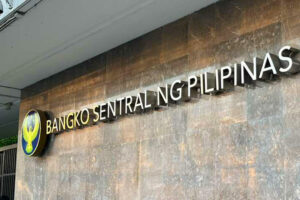THE BANGKO SENTRAL ng Pilipinas’ (BSP) current monetary easing cycle is expected to be “deeper” compared to some of its Southeast Asian peers amid a benign inflation outlook, with one more rate cut likely this year, Bank of America (BofA) Global Research said.
“The BSP has sufficient room to cut its policy rate twice more (in June and October 2025) to bring its policy rate to 5.0% — even if the US Federal Reserve stays on hold for some time,” it said in a note on Tuesday.
“US Fed policy has a cursory impact on BSP’s policy outlook, although there is high correlation between their rate cycles,” it added.
The Monetary Board on June 19 cut the target reverse repurchase rate by 25 basis points (bps) to 5.25% amid a moderating inflation outlook and weak economic growth.
BSP Governor Eli M. Remolona, Jr. last month said they could deliver one more 25-bp cut this year depending on data and how geopolitical and global trade risks develop.
The Monetary Board’s remaining policy meetings this year are scheduled for Aug. 28, Oct. 9, and Dec. 11.
BofA Global Research said Philippine economic growth remains rangebound, even with consumption and investment recovering, adding that the country is “better shielded” from the impact of higher US tariffs.
“The BSP being an inflation-targeting central bank has great emphasis on inflation outlook for its monetary stance,” it added.
However, the central bank’s dovishness and its wide trade and current account deficits could translate to a weaker peso, even as the greenback remains under pressure.
BofA Global Research said that the bias in the Association of Southeast Asian Nations (ASEAN) is towards monetary easing.
Like the BSP, Bank Indonesia and Bank of Thailand are expected to deliver deeper cutting cycles compared to Bank Negara Malaysia and the Monetary Authority of Singapore, while the State Bank of Vietnam is expected to maintain status quo, it said.
“With monetary policy cutting cycles advancing across the region, there is a greater degree of heterogeneity starting to set in, but the broad bias for central banks remains clearly tilted towards easing, amid external uncertainties and inflation pressures contained. However, pace of easing should differ, given varying central banks’ objectives and domestic conditions,” it added.
The outlook for growth and inflation in ASEAN has broadly improved, BofA Global Research said.
“Generally speaking, we expect inflation across the region to remain well below central banks’ target ranges or comfort thresholds over the forecast horizon. Across the board, the absence of strong domestic demand pressures amid ongoing uncertainties should keep a lid on underlying inflation. Food price pressures should also remain contained in the absence of extreme weather patterns,” it said.
“Prevalence of energy price controls in Indonesia and Malaysia would limit the inflation impact, in the event oil prices spike. Overall, inflation will likely stay between the target band in Indonesia, Malaysia and the Philippines, while may undershoot in Singapore and Thailand.”— BVR

